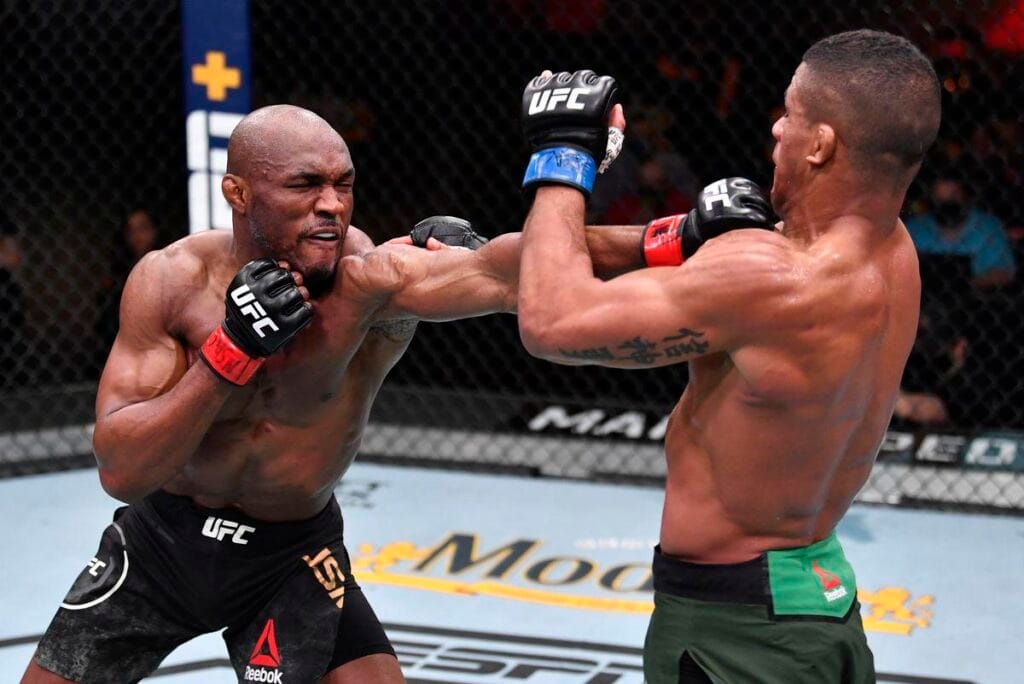Mixed Martial Arts (MMA) is a full-contact combat sport that allows the use of various fighting techniques and skills from a mixture of martial arts traditions and non-traditions.
Originating in ancient combat sports, MMA has evolved significantly over the years to become one of the fastest-growing sports globally.
The history of MMA can be trace back to the ancient Olympic Games in Greece,
Combined boxing and wrestling techniques.
However, the modern era of MMA began in the early 1990s with the establishment of the Ultimate Fighting Championship (UFC) in the United States.
The UFC sought to identify the most effective martial arts in a real fight by pitting practitioners of different disciplines against each other in a no-holds-barred format.
Over time, fighters began to cross-train in multiple martial arts to gain a competitive edge, leading to the development of MMA as a distinct sport.
MMA integrates techniques from a variety of martial arts disciplines.
Boxing provides striking skills, while Brazilian Jiu-Jitsu offers ground fighting and submission techniques.
Muay Thai contributes powerful kicks, knee strikes.
And clinch fighting, whereas wrestling focuses on takedowns and controlling opponents on the ground.
Karate also plays a role, particularly in its emphasis on speed and precision in striking.
This combination of techniques makes MMA a versatile and dynamic sport.
It requires fighters to be proficient in multiple areas.
The sport’s rise in popularity can be attributed to its thrilling nature and the high level of skill displayed by athletes.
Major events such as UFC, Bellator, and ONE Championship have brought MMA to a global audience, with fights broadcasted to millions of viewers worldwide.

The inclusion of MMA in major sporting events has further legitimized the sport and elevated its status within the sporting community.
Today, MMA is not only a popular spectator sport but also a widely practiced form of physical training and self-defense.
Mixed Martial Arts (MMA) is governed by several key organizations that play a crucial role in the sport’s development, regulation, and promotion.
Among the most prominent of these organizations is the Ultimate Fighting Championship (UFC).
Established in 1993, the UFC has become synonymous with MMA, setting high standards for competition and athlete conduct.
The UFC is responsible for organizing events, enforcing rules, and promoting fighters on a global scale, thus significantly influencing the sport’s growth and popularity.
Another major organization is Bellator MMA.
Founded in 2008, Bellator MMA has established itself as a formidable competitor to the UFC.
Bellator focuses on providing a platform for both established and emerging fighters.
Hosting events that adhere to stringent regulatory standards.
The organization emphasizes athlete safety and integrity, contributing to the overall credibility of MMA as a sport.
ONE Championship, based in Singapore, is another leading MMA organization with a significant international presence.
ONE Championship is distinctive for its emphasis on martial arts beyond just MMA, incorporating various fighting disciplines into its events.
This organization promotes a philosophy of respect and honor, which is reflected in its strict adherence to rules and its commitment to athlete welfare.
ONE Championship’s efforts have been instrumental in popularizing MMA across Asia and beyond.
Beyond these major entities, international governing bodies also play a vital role in the regulation and standardization of MMA.
Organizations such as the International Mixed Martial Arts Federation (IMMAF) work to unify global standards, providing a cohesive framework for the sport.
The IMMAF collaborates with national federations to ensure consistent rule enforcement and to promote amateur MMA.
which serves as a foundation for professional levels.
These governing bodies and organizations collectively ensure that MMA is conducted within a structured and safe environment.
They are pivotal in setting rules, hosting events.
And promoting the sport, thus ensuring its integrity and continued growth on a global scale.
Weight Classes and Divisions
Mixed Martial Arts (MMA) is a sport that encompasses a multitude of weight classes and divisions.
Each designed to ensure fairness and safety during competition.
The primary weight classes recognized in most major MMA organizations include flyweight, bantamweight, featherweight, lightweight, welterweight, middleweight, light heavyweight, and heavyweight.
Each of these divisions has specific weight limits that fighters must adhere to in order to compete within that category.
The flyweight division generally includes fighters who weigh up to 125 pounds, bantamweight is for those up to 135 pounds, and featherweight accommodates competitors up to 145 pounds.
The lightweight division allows fighters up to 155 pounds, while welterweight includes those up to 170 pounds.
Middleweight fighters can weigh up to 185 pounds, light heavyweight is capped at 205 pounds, and the heavyweight division encompasses fighters up to 265 pounds.
Weight classes are paramount in MMA for multiple reasons.
Firstly, they ensure a level playing field by matching fighters of similar size and weight.
Thereby minimizing disparities that could lead to unfair advantages.
This is crucial for maintaining the integrity of the sport and ensuring that victories are earned through skill and strategy rather than sheer physical dominance.
Secondly, weight classes enhance the safety of the fighters.
Competing against someone significantly heavier can increase the risk of injury.
As the larger opponent may possess greater strength and power.
Before any bout, fighters are required to weigh in, typically the day before the event.
This process involves stepping onto a scale in front of officials to confirm that they meet the weight requirements for their respective division.
If a fighter fails to make weight, several consequences can ensue.
These may include financial penalties, the bout being canceled, or the fight proceeding as a catchweight bout.
often with the higher weight fighter forfeiting a portion of their purse to their opponent.

Making weight is a critical aspect of a fighter’s preparation and professionalism.
underscoring the importance of discipline and adherence to the sport’s regulations.
Fight Structure and Rounds
The structure of a Mixed Martial Arts (MMA) fight is meticulously designed to ensure a balance between competition fairness and athlete safety.
Central to this structure is the configuration of rounds and their respective durations.
Typically, MMA fights are divided into three main rounds, each lasting five minutes.
However, when it comes to title fights, the number of rounds increases to five, maintaining the same five-minute duration per round.
This standardized format allows for a coherent framework across different bouts and promotions.
Ensuring consistency in how fights are conducted and judged.
The implementation of these time limits is crucial for several reasons.
Firstly, it ensures that the fighters are not subjected to prolonged periods of intense physical exertion.
which could lead to severe fatigue or injury.
By having defined rounds with specific durations.
Athletes can manage their energy and resources more efficiently.
Which is essential for maintaining peak performance throughout the fight.
Moreover, the breaks between rounds offer fighters a brief respite, allowing them to recover.
Plus receive strategic advice from their corners, and reassess their approach.
From a strategic standpoint, the round structure profoundly influences how fighters plan and execute their game plans.
Knowing they have a limited time to make an impact.
Fighters must be tactical about when to exert energy and when to conserve it.
The pacing of the fight becomes a critical element.
As fighters must balance aggressive maneuvers with defensive strategies to avoid early fatigue.
Endurance becomes a key factor, especially in title fights that extend to five rounds.
Where maintaining stamina can be the difference between victory and defeat.
In conclusion, the fight structure and rounds in MMA are integral to the sport’s regulation.
Impacting both the strategy employed by fighters and their physical endurance.
By adhering to these established guidelines, MMA ensures a competitive yet safe environment.
Allowing athletes to showcase their skills within a well-defined and controlled framework.
Legal and Illegal Techniques
Mixed Martial Arts (MMA) is a sport that combines various fighting disciplines.
Allowing for a diverse range of techniques.
Legal techniques in MMA include punches, kicks, elbows, knees, grappling, and submissions.

Each of these techniques plays a crucial role in a fighter’s arsenal.
Punches, delivered with the fists, are fundamental in striking, while kicks, utilizing the lower limbs, can target various parts of the opponent’s body.
Elbows and knees are also permitted, offering fighters short-range striking options that can be particularly effective in close combat.
Grappling encompasses a variety of holds, throws, and takedowns, enabling fighters to control their opponents and set up submissions.
Submissions, such as chokes and joint locks, aim to force an opponent to concede defeat by tapping out.
In contrast to these legal techniques, MMA also has a set of clearly defined illegal techniques designed to maintain fighter safety and ensure fair competition.
Eye gouging, which involves poking or pressing the eyes, is strictly prohibit due to the severe risk of permanent damage.
Biting, another illegal technique, is banned to prevent serious injury and infection.
Groin attacks, targeting the sensitive area, are forbid due to the potential for severe pain and long-term damage.
Strikes to the back of the head, commonly referred to as “rabbit punches,” are prohibit because they pose a significant risk of concussion or spinal injury.
Other illegal techniques include hair pulling, fish hooking (inserting fingers into the mouth or nose to control the opponent), and small joint manipulation (bending fingers or toes individually).
Adhering to these rules is paramount for the safety of the fighters and the integrity of the sport.
Referees are charge with enforcing these regulations, and violations can result in penalties, disqualifications, or suspensions.
By adhering to these guidelines, MMA maintains a balance between the intensity of combat and the necessity of fighter welfare.
Ensuring the sport remains both thrilling and responsible.
Scoring and Judging Criteria
In Mixed Martial Arts (MMA), the scoring and judging criteria play a critical role in determining the outcome of a fight.
Fights are scored by official judges who assess the fighters based on several key criteria.
effective striking, grappling, aggression, and octagon control.
These elements are carefully evaluated to ensure a fair and balanced judgment of each contestant’s performance.
Effective striking and grappling are paramount in the judges’ evaluation.
Effective striking refers to the impact and precision of a fighter’s strikes.
while effective grappling encompasses successful takedowns, submissions, and dominant positions.
Aggression is another important criterion.
where judges consider the fighter’s ability to push the pace and impose their will on the opponent.
Lastly, octagon control pertains to a fighter’s ability to dictate the location and pace of the fight.
demonstrating superior ring generalship.
The 10-point must system is the standardized scoring method used in MMA.
Under this system, judges award 10 points to the winner of each round and a lesser score, typically 9 or fewer, to the loser.
This system is design to provide a clear and concise method of determining the victor in each round.
ultimately leading to the overall decision at the end of the fight.
In cases where a round is extremely close.
judges may score it 10-10, although this is rare.
Despite the structured criteria, controversies in judging and scoring frequently arise.

Discrepancies can occur due to subjective interpretations of the criteria.
leading to debates among fans, fighters, and analysts.
Instances of perceived bias, inconsistent scoring.
and lack of transparency in the judging process have sparked calls for reforms and improvements.
These issues highlight the need for ongoing education and training for judges to ensure that the scoring system remains as accurate and impartial as possible.
Understanding the intricacies of MMA scoring and judging criteria is crucial for appreciating the sport’s competitive nature.
It emphasizes the importance of not only offensive capabilities but also strategic and tactical acumen.
which are essential for achieving success in the octagon.
Safety Measures and Medical Regulations
Ensuring the safety of fighters is paramount in the sport of Mixed Martial Arts (MMA).
Several protocols and regulations have been establish to minimize risks and protect athletes.
One of the critical measures includes comprehensive pre-fight medical examinations.
Ensuring that fighters are in optimal condition before stepping into the cage.
During the bout, the presence of in-fight medical staff is mandatory.
Their vigilance is crucial in a sport where the intensity and physicality can lead to sudden injuries.
In addition to medical staff, referees play a vital role in maintaining fighter safety.
Trained to recognize signs of distress, referees have the authority to stop a fight if they believe a fighter is unable to defend themselves adequately or is at risk of severe injury.

This intervention is essential in preventing long-term harm and ensuring the well-being of the participants.
Post-fight medical checks are another layer of protection.
After the conclusion of a match, fighters undergo thorough evaluations to detect any injuries sustained during the bout.
These post-fight assessments help in the early diagnosis and treatment of potential issues.
allowing for timely medical intervention and recovery planning.
Protective gear is also a fundamental aspect of MMA safety.
which serve to reduce the impact of strikes and protect both the wearer and their opponent.
Mouthguards are essential in preventing dental injuries and concussions, while gloves cushion the blows, decreasing the likelihood of fractures and cuts.
These equipment standards, combined with rigorous safety protocols.
create a safer environment for athletes competing in the dynamic and demanding sport of MMA.
Disciplinary Actions and Penalties
In the realm of Mixed Martial Arts (MMA), adherence to establish rules and regulations is paramount to ensure fair competition and safety.
Violations of these rules can lead to a variety of disciplinary actions and penalties.
Common disciplinary actions include disqualification, fines, suspensions, and loss of fight purses.
Disqualification is a severe penalty typically reserve for flagrant infractions.
such as illegal strikes or unsportsmanlike conduct.
For instance, a fighter may be disqualify for delivering a knee to a downed opponent.
Under most MMA rulesets.
Fines, on the other hand, are financial penalties will impose on fighters for infractions such as missing weight or failing to adhere to contractual obligations.
These fines can significantly impact a fighter’s earnings.
serving as a deterrent against non-compliance.
Suspensions are another common form of disciplinary action, ranging from temporary bans to indefinite suspensions.
depending on the severity of the violation.
For example, a fighter who tests positive for ban substances might face a suspension lasting several months or even years.

Additionally, suspensions often come with mandatory rehabilitation or educational programs to ensure the fighter does not repeat the infraction.
This penalty is commonly applying in cases of severe rule violations.
such as cheating or extreme misconduct during a fight.
The forfeited purse is often redistribute to the opponent or to cover fines and other costs.
Athletic commissions play a crucial role in overseeing disciplinary actions and ensuring that penalties are fairly and apply consistently.
These regulatory bodies are responsible for investigating violations, issuing penalties, and handling appeals.
Fighters who believe they have unfairly discipline can appeal the decision through their respective athletic commission’s formal appeals process.
This process typically involves a review of the evidence, a hearing.
and a final judgment by the commission.
Through these measures, the sport of MMA maintains its competitive integrity while protecting the safety and well-being of its participants.
The oversight by athletic commissions ensures that all fighters are the same standards.
promoting a level playing field for all competitors.



